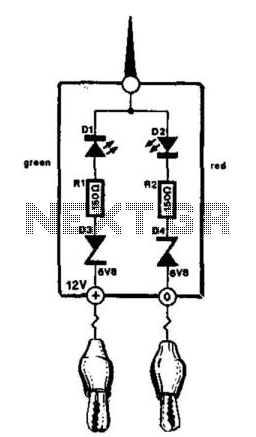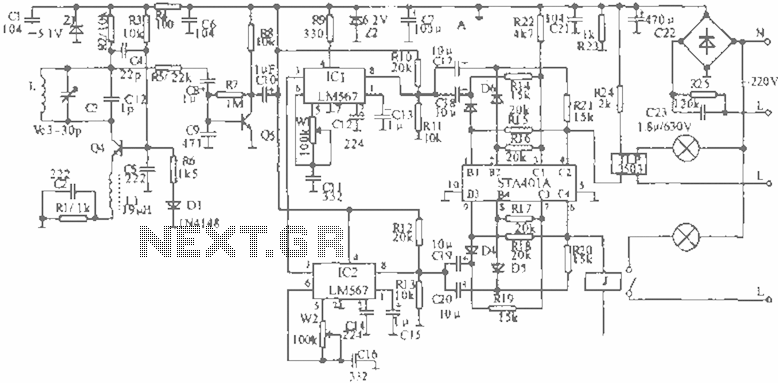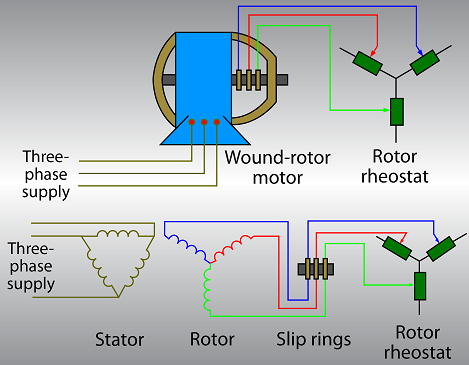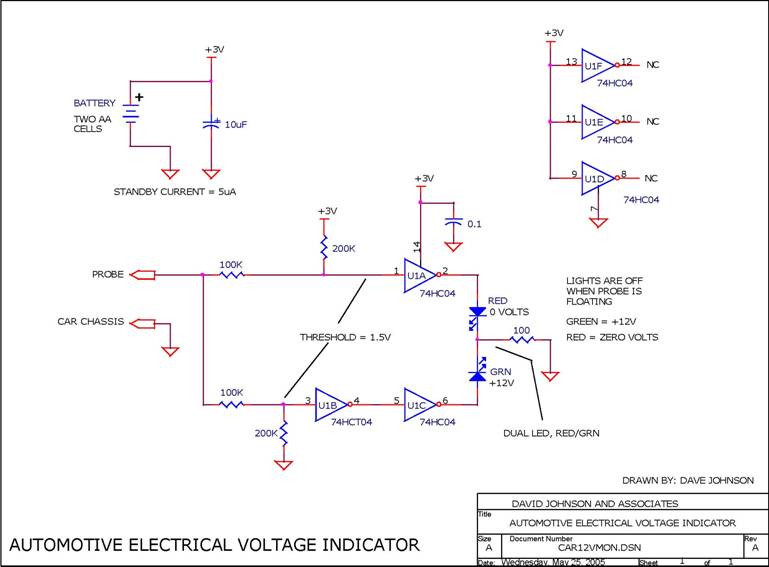
Index 2 - TV Electrical Equipment SeekIC.com

This unit captures the ATV signal by sampling the transmission line with minimal insertion loss. It features two N connectors for input and output connections, while a BNC connector is utilized for the video output. The detected output connects to a monitor and scope, allowing for precise adjustments of the transmitter for optimal video and synchronization levels. Two different models are available; both include relative power output meters, but one model offers greater accuracy. There are two PC controls, one for video level and the other for power output. A block diagram of the stereo-TV decoder illustrates the relationships between the various sections of the circuit, with detailed diagrams for each subsection. The decoder section is centered around IC1, a standard 4.5-MHz audio demodulator. The output from IC1 is routed to a switch, allowing for selection between the internally demodulated signal and an externally demodulated one. Buffer amplifier IC2-a provides a low-impedance source to drive IC3, an LM1800 stereo demodulator. When IC3 locks onto a stereo signal, the outputs at pins 4 and 5 deliver discrete left and right channel signals. To reduce noise in the left-right signal, discrete outputs must be recombined into sum and difference signals. Op amp IC4-a acts as a difference amplifier to regenerate the left-right signal, summing the inputs (+L, -R). Capacitor C18 bridges the left and right channel outputs of the demodulator, slightly decreasing high-frequency separation but also reducing high-frequency distortion. The L + R signal is taken from the LM1800 at pin 2, appearing at the output of an internal buffer amplifier. The raw L - R signal is processed through IC4-b, a 12-kHz low-pass filter, while the L + R signal is similarly filtered to maintain equal phase shifts for both signals. The L - R signal is then sent to Q2, which adds a level control to the path, providing low source impedance for subsequent circuits and inverting the signal by 180° to compensate for the inversion in the compander. The expander stage follows, with a 75 µs de-emphasis network (R27 and C29) at the collector of Q2, functioning similarly to the network associated with Q1. Q2 feeds both Q3 and IC5-a, a -12 dB per octave high-pass filter. The output of this filter drives the rectifier input of IC6, an NE570. A 75 Hz high-pass filter at the rectifier input mitigates hum, 60 Hz sync buzz, and other low-frequency noise in the L - R signal, preventing pumping or breathing. The NE570 incorporates an onboard op amp, with its inverting input accessible directly at pin 5 and via a 20 kΩ series resistor at pin 6. An 18 kΩ resistor (R30) combines with the internal resistor and C32 (0.01 µF) to form a first-order filter with a 390 µs time constant. Due to the inverting mode of the internal op amp, the -(L - R) signal is restored to the correct (L - R) form. The output of the expander drives another third-order 75 Hz high-pass filter, providing -18 dB per octave roll-off to prevent low-frequency noise from appearing at the output of the decoder. At this stage, the (L - R) signal is restored to a condition similar to that prior to dBx companding at the transmitter. This ATV downconverter converts the 420 to 450 MHz ATV band, which is several channels below the lower limit of the UHF band, to channel 3 or 4 for viewing on nearly any television. The downconverter includes a low-noise preamplifier stage and a double-balanced passive mixer for enhanced performance and a wide dynamic range, essential for today's crowded UHF bands. The converter operates with a current draw of approximately 27 milliamperes from a 13.2-volt DC source, allowing for versatile usage.This unit picks up your ATV signal by sampling the transmission line with negligible insertion loss. It uses 2 N connectors for input and output connections. A BNC connector is used on the video output. The detected output is connected to your rrtonitor and scope so that you can accu-rately adjust your transmitter for proper video and synch levels . TWo different models are provided. Both have relative power output meters, but one has greater accuracy. There are two PC controls, one for video level and the other for power output. (View) A block diagram of the stereo-TV decoder is shown in A. It shows the overall relationships be-tween the separate sections of the circuit; B through E show the details of each subsection. The de-coder section centers around IC1, a standard 4. 5-MHz audio demodulator. The output of IC1 is routed to 51, which allows you to choose between the internally demodulated signal and an exter-nally demodulated one.
Buffer amplifier IC2-a then provides a low-impedance source to drive IC3, an LM1800 stereo demodulator. When IC3 is locked on a stereo signal, the outputs presented at pins 4 and 5 are discrete left- and right-channel signals, respectively.
In order to provide noise reduction to the L-R signal, you must recombine the discrete outputs into sum and difference signals. Op amp IC4-a is used to regenerate the L-R signal. It is wired as a difference amplifier, wherein the inputs are summed together (+L -, R). Capacitor C18 bridges the left- and right-channel outputs of the demodulator. Although it decreases high-frequency separation slightly, it also reduces high-frequency distortion. The L + R signal is taken from the LM1800 at pin 2, where it appears at the output of an internal buffer amplifier.
The rawL -R signal is applied to IC4-b, a 12-kHz lowpass filter. The L + R signal is also fed through a 12-kHz low pass filter in order to keep the phase shift undergone by both signals equal. Next, the L - R signal is fed to Q2. It allows you to add a level control to the L - R signal path; it provides a low source impedance for driving the following circuits, and it inverts the signal 180 °.
In-version is necessary to compensate for the 180 °inversion in the compander. Next comes the expander stage. At the collector of Q2 is a 75- s de-emphasis network (R27 and C29) that functions just like the network that is associated with Q1. Note that Q2 feeds both Q3 and IC5-a, a -12-dB per octave high-pass filter. The output of that filter drives the rectifier input of IC6, an NE570. The 75-Hz high-pass filter at the rectifier input helps to prevent hum, 60-Hz sych buzz, and other low-frequency noise in the L - R signal from causing pumping or breathing.
The NE570 contains an on-board op amp; its irtverting input is available directly at pin 5 and via a 20-kO series resistor at pin 6. The 18-kQ resistor (R30) combines with the internal resistor and C32 (0. 01 F) to form a first-order filter with a 390- s time constant. Because the internal op amp oper-ates in the inverting mode, the -(L - R) signal is restored to the proper (L - R) form.
The output of the expander drives another 75-Hz high-pass filter, but this one is a third-order type that provides -18 dB per octave rolloff. It is used to keep low-frequency noise from showing up at the output of the decoder. At this point, the (L - R) signal has been restored, more or less, to the condition it was in before it was dBx companded at the transmitter.
(View) This ATV downconverter converts the 420- to 450-MHz ATV band, which is several channels be-tow the lower limit of the UHF band, to channel 3 or 4 for viewing on virtually any TV. The down-converter has a low-noise preamplifier stage and a double-balanced passive mixer for good performance and a wide dynamic range.
That is necessary with today`s crowded UHF bands. The converter draws about 27 milliamperes from a 13. 2-volt dc source, so it can be used 🔗 External reference
Buffer amplifier IC2-a then provides a low-impedance source to drive IC3, an LM1800 stereo demodulator. When IC3 is locked on a stereo signal, the outputs presented at pins 4 and 5 are discrete left- and right-channel signals, respectively.
In order to provide noise reduction to the L-R signal, you must recombine the discrete outputs into sum and difference signals. Op amp IC4-a is used to regenerate the L-R signal. It is wired as a difference amplifier, wherein the inputs are summed together (+L -, R). Capacitor C18 bridges the left- and right-channel outputs of the demodulator. Although it decreases high-frequency separation slightly, it also reduces high-frequency distortion. The L + R signal is taken from the LM1800 at pin 2, where it appears at the output of an internal buffer amplifier.
The rawL -R signal is applied to IC4-b, a 12-kHz lowpass filter. The L + R signal is also fed through a 12-kHz low pass filter in order to keep the phase shift undergone by both signals equal. Next, the L - R signal is fed to Q2. It allows you to add a level control to the L - R signal path; it provides a low source impedance for driving the following circuits, and it inverts the signal 180 °.
In-version is necessary to compensate for the 180 °inversion in the compander. Next comes the expander stage. At the collector of Q2 is a 75- s de-emphasis network (R27 and C29) that functions just like the network that is associated with Q1. Note that Q2 feeds both Q3 and IC5-a, a -12-dB per octave high-pass filter. The output of that filter drives the rectifier input of IC6, an NE570. The 75-Hz high-pass filter at the rectifier input helps to prevent hum, 60-Hz sych buzz, and other low-frequency noise in the L - R signal from causing pumping or breathing.
The NE570 contains an on-board op amp; its irtverting input is available directly at pin 5 and via a 20-kO series resistor at pin 6. The 18-kQ resistor (R30) combines with the internal resistor and C32 (0. 01 F) to form a first-order filter with a 390- s time constant. Because the internal op amp oper-ates in the inverting mode, the -(L - R) signal is restored to the proper (L - R) form.
The output of the expander drives another 75-Hz high-pass filter, but this one is a third-order type that provides -18 dB per octave rolloff. It is used to keep low-frequency noise from showing up at the output of the decoder. At this point, the (L - R) signal has been restored, more or less, to the condition it was in before it was dBx companded at the transmitter.
(View) This ATV downconverter converts the 420- to 450-MHz ATV band, which is several channels be-tow the lower limit of the UHF band, to channel 3 or 4 for viewing on virtually any TV. The down-converter has a low-noise preamplifier stage and a double-balanced passive mixer for good performance and a wide dynamic range.
That is necessary with today`s crowded UHF bands. The converter draws about 27 milliamperes from a 13. 2-volt dc source, so it can be used 🔗 External reference





